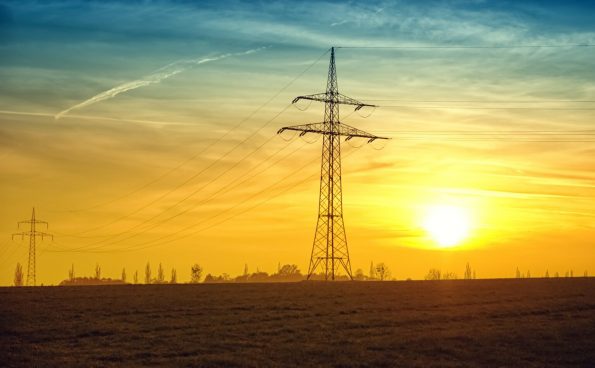As the second-largest producer of hydroelectricity aka hydro in the world, Canada’s electricity sector is striving on different sources. The cost of electricity in Canada varies based on different factors. The province you reside in, the source of electricity, among many other factors affect the cost of electricity in Canada.
Electricity in Canada
Electricity, popularly known as hydro in Canada, is an essential source of energy that we all need for survival all over the world. We all depend on electricity for our daily activities. Most of our household equipment like the blender, dishwasher and washing machine all depend on electricity.
Electric cars are the new advancement in the use of electricity. As a country advances technologically and its economy develops, the demand for electricity grows rapidly. The sources of electricity and technology used to generate electricity have changed over the years.
Most electricity is generated with steam turbines using fossil fuels, nuclear, biomass, geothermal solar thermal energy. All over the world, electricity supply and price are regulated by governments of respective countries.
Apart from Hydroelectricity which accounts for about 59.3% of Canada’s electricity supply, other sources for electricity in Canada include:
- Non-hydro renewable sources
- Uranium
- Natural gas
- Wind
- Coal
- Biomass
- Solar
- Petroleum
Home Appliances that Consumes Energy
- Central Air Conditioner
- Water Heater
- Refrigerator
- Dryer
- Oven Range
- Lighting 4-5 room household
- Dishwasher
- Television
- Microwave
- Washing Machine
Cost of Electricity in Canada
In Canada, there are a number of factors that influence the price of electricity. They include:
- Fixed costs and variable costs
- Geography of the region
- Source of generation
- Maintenance and renewal of infrastructure
The price of electricity in Canada is only a fraction of your household budget. An average Canadian spends about CA$3.59 per day on electricity. Most Canadians spend more money on clothing and footwear than they do on electricity.
The average price of electricity for residential use in Canada is CA$0.174 per KWh (Kilowatt hour) with the inclusion of the territories. Excluding the territories, the average price is CA$0.135. This is based on the average monthly consumption of 1000 KWh. That is, in a month, the average price of electricity in Canada is CA$174 including the territories and, CA$135 excluding the territories.
Below is a table of the average residential cost of electricity in each province in Canada based on the average monthly consumption of 1000 KWh.
Province | Cost Per Kwh | Cost Per Kwh (Monthly) |
|---|---|---|
Alberta | CA$0.167 | CA$167 |
British Columbia | CA$0.124 | CA$124 |
Manitoba | CA$0.096 | CA$96 |
New Brunswick | CA$0.127 | CA$127 |
Newfoundland and Labrador | CA$0.138 | CA$138 |
Nova Scotia | CA$0.150 | CA$150 |
North-West Territories | CA$0.387 | CA$387 |
Nunavut | CA$0.375 | CA$375 |
Ontario | CA$0.125 | CA$125 |
Prince Edward Island | CA$0.168 | CA$168 |
Province | Cost Per Kwh | Cost Per Kwh (Monthly) |
|---|---|---|
Quebec | CA$0 .073 | CA$73 |
Saskatchewan | CA$0.182 | CA$182 |
Yukon | CA$0.145 | CA$145 |
Quebec currently has the cheapest cost of electricity, followed by Manitoba. The Northwest territories have the most expensive electricity price followed by Nunavut.
Electricity Source per Province in Canada
Regulation of electricity in Canada occurs at provincial levels and the regulations include pricing as well as types of power generation used. Currently, in Canada, electricity is generated and distributed by either publicly or privately owned utilities or both, as in the cases of Alberta and Ontario.
Deregulated wholesale electricity markets can only be found in Alberta and Ontario. Different provinces in Canada use different sources for the generation of electricity.
In British Columbia, Manitoba, Quebec, Newfoundland and Labrador, and Yukon, more than 80% of electricity is generated from hydropower.
In Ontario, New Brunswick, and the Northwestern territories, a combination of nuclear, hydro, wind, biomass, coal, natural gas, and petroleum is used in generating electricity.
In Alberta, Saskatchewan, Nova Scotia, and Nunavut, they generate the majority of their electricity from fossil fuels like coal, natural gas, or petroleum.
With the increase in demand for electricity, Canada’s electricity sector has noted a 5% growth since 2015, and currently exports about 9% of the electricity it generates to the United States.
Electricity Production per Province and Source
Hydro
60.2% of Canada’s electricity is generated from Hydro. Below are details of provinces that generate electricity from hydroelectricity.
| Province | Electricity Supply |
| Manitoba | 96.8% |
| Quebec | 95.0% |
| Newfoundland and Labrador | 93.7% |
| Yukon | 92.2% |
| British Columbia | 90.5% |
| Northwest Territories | 38.5% |
| Ontario | 25.9% |
| New Brunswick | 19.6% |
| Saskatchewan | 13.7% |
| Nova Scotia | 8.8% |
| Alberta | 2.5% |
Nuclear
About 14.6% of Canada’s electricity is generated from Nuclear. Below is the distribution per province that generates electricity from nuclear.
| Province | Electricity Supply |
| Ontario | 58.6% |
| New Brunswick | 36.1% |
Wind
Wind makes up about 4.4% of Canada’s electricity generation. Below is the provincial supply from wind.
| Province | Electricity Supply |
| Prince Edward Island | 97.9% |
| Nova Scotia | 11.8% |
| Ontario | 6.7% |
| New Brunswick | 6.6% |
| Alberta | 5.4% |
| Quebec | 3.9% |
| Saskatchewan | 3.8% |
| Manitoba | 2.7% |
| Northwest Territories | 2.0% |
| British Columbia | 1.3% |
| Newfoundland and Labrador | 0.5% |
Biomass
1.8% of Canada’s electricity is from Biomass. Below is the provincial supply from Biomass in Canada.
| Province | Electricity Supply |
| Prince Edward Island | 0.7% |
| Nova Scotia | 4.9% |
| Ontario | 1.3% |
| New Brunswick | 4.2% |
| Alberta | 2.2% |
| Quebec | 0.8% |
| Manitoba | 0.1% |
| British Columbia | 6.4% |
| Newfoundland and Labrador | 0.3% |
Natural Gas
Natural gas constitutes 8.6% of Canada’s electricity generation.
| Province | Electricity Supply |
| Alberta | 42.2% |
| Saskatchewan | 35.7% |
| Nova Scotia | 14.3% |
| New Brunswick | 9.9% |
| Ontario | 5.2% |
| Northwest Territories | 4.0% |
| Yukon | 2.0% |
| British Columbia | 1.1% |
| Newfoundland and Labrador | 0.7% |
| Quebec | 0.1% |
Petroleum
1.2% of Canada’s electricity is generated from Petroleum.
| Province | Electricity Supply |
| Nunavut | 100% |
| Northwest Territories | 55.3% |
| Nova Scotia | 12.2% |
| Yukon | 5.5% |
| Newfoundland and Labrador | 4.8% |
| Alberta | 2.6% |
| Prince Edward Island | 1.1% |
| British Columbia | 0.7% |
| Quebec | 0.2% |
| Manitoba | 0.2% |
| Ontario | 0.1% |
Solar
Solar makes up 0.5% of Canada’s electricity generation. Below is the provincial supply from solar in Canada.
| Province | Electricity Supply |
| Ontario | 2.2% |
| Prince Edward Island | 0.3% |
| Yukon | 0.3% |
| Northwest Territories | 0.2% |
| Saskatchewan | 0.1% |
| Alberta | 0.1% |
| Nova Scotia | 0.03% |
Coal
8.6% of Canada’s electricity is generated via coal.
| Province | Electricity Supply |
| Nova Scotia | 47.9% |
| Saskatchewan | 46.6% |
| Alberta | 44.9% |
| New Brunswick | 15.8% |
| Manitoba | 0.1% |
Other Sources
| Province | Electricity Supply |
| Alberta | 0.2% |
| Nova Scotia | 0.2% |
Electricity Distribution Company per Province in Canada
The use of electricity in Canada differs greatly by province. Provinces like British Columbia and Quebec with cheap and plentiful electricity from large-scale electricity projects tend to use more electricity per person when compared with other provinces that rely on other alternative sources of energy for things like heating their homes and water.
Below is a table of some electric utilities in Canada, their type and provinces by size:
| Name | Type | Province |
| Hydro Quebec | Public | Quebec |
| Hydro One | Public/Private | Ontario |
| Ontario Power Generation | Public | Ontario |
| Bc Hydro | Public | British Columbia |
| Alectra Utilities | Municipal | Ontario |
| Enmax | Municipal | Alberta |
| Trans Alta | Investor-Owned | Alberta |
| Toronto Hydro | Municipal | Ontario |
| Atco | Private | Alberta |
| Bruce Power | Private | Ontario |
| Epcor | Municipal | Alberta |
| Capital Power Corporation | Private | Alberta |
| Manitoba Hydro | Public | Manitoba |
| NB Power | Public | New Brunswick |
| Sask Power | Public | Saskatchewan |
| Nova Scotia Power | Private | Nova Scotia |
| Hydro Ottawa | Municipal | Ontario |
| Newfoundland And Labrador Hydro | Public | Newfoundland And Labrador |
| Saskatoon Light& Power | Municipal | Saskatchewan |
| Cornwall Electric | Public | Ontario |
Most of the public-owned utilities have integrated services, that is, they generate and distribute electricity. While the privately-owned utilities sometimes deal with generations but are mostly involved in transportation and distribution of electricity. The municipal utilities are mainly for the distribution of electricity.
Energy Saving Tips
- Get a prepared electric bill plan
- Find and seal leaks around the house
- Use a programmable thermostat
- Cover drafty windows
- Use less hot water
- Unplug appliance when not in use
- Replace air filters
- Extra-insulate your room
Generally, electricity is considered cheap in Canada as you only spend a small percentage of your monthly budget on it. Bear in mind that depending on all the factors that influence the price of electricity, the price is not constant and can change based on provincial policies.







